Image-Guided Superficial Radiation Therapy (IG-SRT)
Skin cancer is the most common type of skin cancer diagnosed in the United States and can affect anyone of any age. The most common forms of non-melanoma skin cancers include basal cell and squamous cell carcinomas. While the standard treatment for the removal of these forms of cancer is surgical excision, there is now another non-surgical option available with high cure rates: Image-Guided Superficial Radiation Therapy (IG-SRT).
Hear From Our Very First IG-SRT Patient
What is IG-SRT?
Image-Guided Superficial Radiotherapy (IG-SRT) is the first and only skin cancer treatment that uses ultrasound images. The ultrasound images let us see the exact size of the cancer so we can target the area with the precise dose. These images also show the remaining cancer cells shrinking and going away after each radiation treatment. While traditional skin cancer procedures are effective, they require surgical incisions and a lengthy recovery. IG-SRT requires no anesthesia, incisions, stitching, scarring, pain, or downtime.
With unique advancements in technology, such as IG-SRT, more healthy tissue is left unaffected. This low dose of radiation will safely kill cancer cells without damaging healthy surrounding tissue.
This treatment differs from traditional SRT, which employs electron beam radiotherapy without the benefit of ultrasound images. The ultrasound images let your radiation therapist see the exact size of the lesions treated and the tumor configuration so he or she can target the area with an accurate dose. These images also show the cancer shrinking after each treatment.
FDA-Approved
IG-SRT is an FDA-cleared non-surgical treatment option for basal cell carcinoma, and squamous cell carcinoma. According to the National Comprehensive Cancer Network guidelines, radiation therapy such as IG-SRT is an effective treatment option for patients.
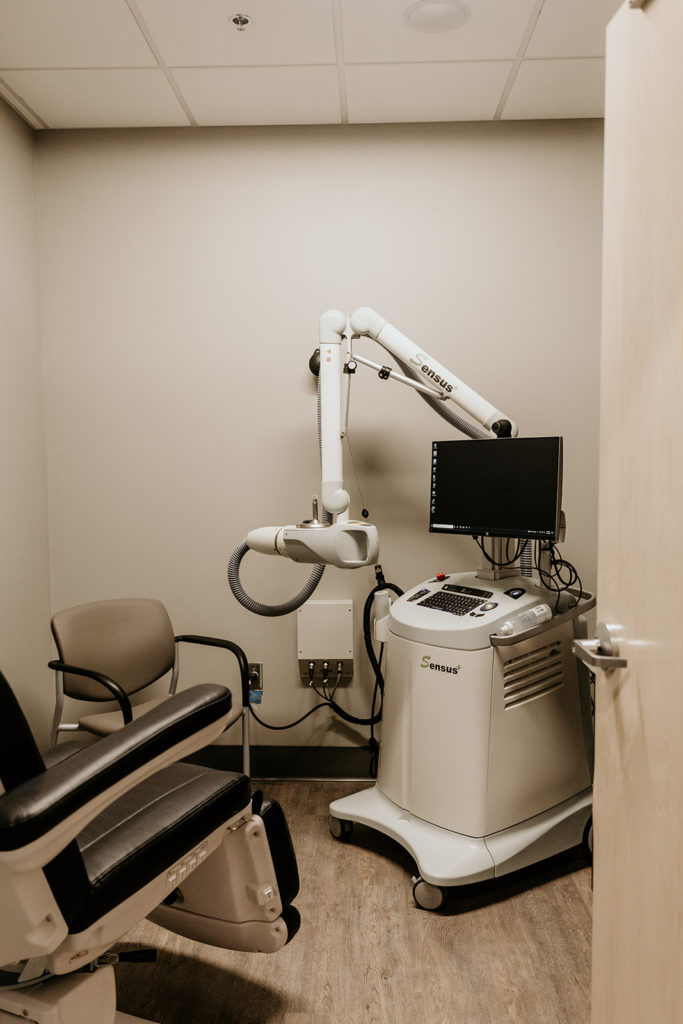
How Does IG-SRT Work?
This alternative to surgery delivers optimum results to treat skin cancer without the negative side effects of invasive treatments. There is no cutting or stitching, less risk for infection, and no need for reconstructive plastic surgery to repair surgical scars.
This treatment utilizes a small, portable device that delivers low energy just beneath the skin’s surface. Using a precise, calibrated dose of SRT that only penetrates up to five millimeters under the skin’s surface, this minimally invasive treatment effectively removes both basal and squamous cell carcinoma, as well as unwanted keloids.
The machine used, the SRT-100 Vision, allows providers to see and treat the affected areas through high-frequency ultrasound for imaging. This allows for the treatment areas to be more thoroughly assessed, for more precise results. Treatments generally take about 10-15 minutes total per appointment.
Who is a Candidate for IG-SRT?
Ideal candidates for IG-SRT are those with basal cell or squamous cell carcinomas (non-melanoma skin cancer). Individuals who are afraid of needles or surgery, or those who are unfit for surgery due to health issues or conditions may also be good candidates since this treatment uses external beam radiation therapy. Skin cancers that are difficult to treat with surgery such as cancers on the scalp, ears, eyes, hands, feet, and shins are often great candidates for IG-SRT radiation treatments. To learn more about this treatment and if it is right for you, contact our office today to schedule a consultation appointment.
SRT for Keloids
It’s important to offer the best keloid treatment available to patients. Superficial radiation therapy (SRT) is the most effective and safe treatment for keloid scar tissue after surgical removal.
Keloid removal generally involves several surgeries. The reason for this is that the keloids grow back at the incision site in over 90% of cases. When SRT follows surgical removal, recurrence rates drop to as low as 10%. The SRT-100™ delivers a precise, calibrated dose of SRT Therapy. This radiation only goes skin deep. Thus, safely destroying the cells that form keloids and keeping the skin smooth while the incision heals.
Scheduling for most people means a total of 3 daily treatments. This should be coordinated within 24 hours after your keloid removal. The initial treatment is generally 30 minutes and each consecutive treatment is completely painless and only takes about 15 minutes.
If your scar or keloid is causing confidence issues or pain, or if you are unable to perform daily activities, then SRT may be the perfect solution for you.
Before and Afters
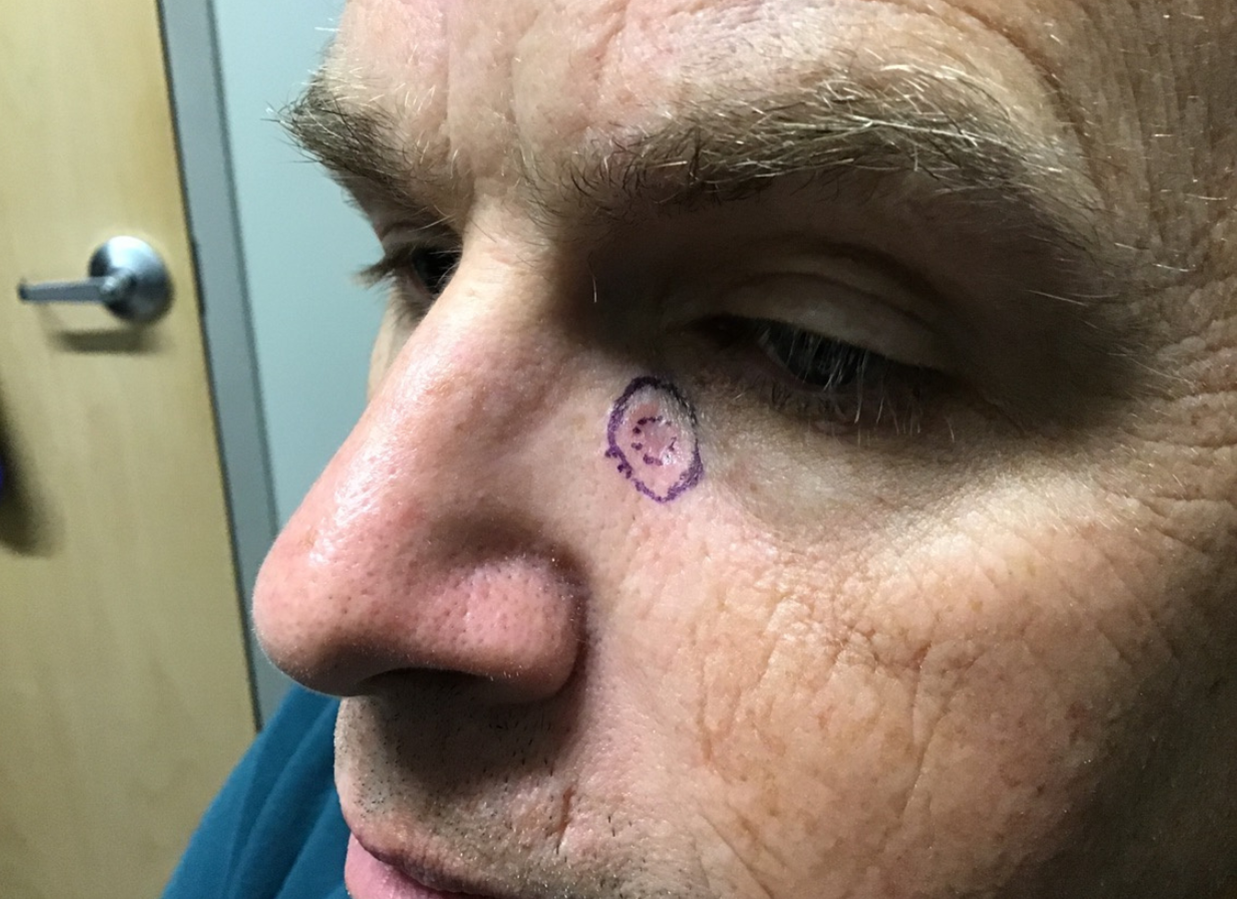
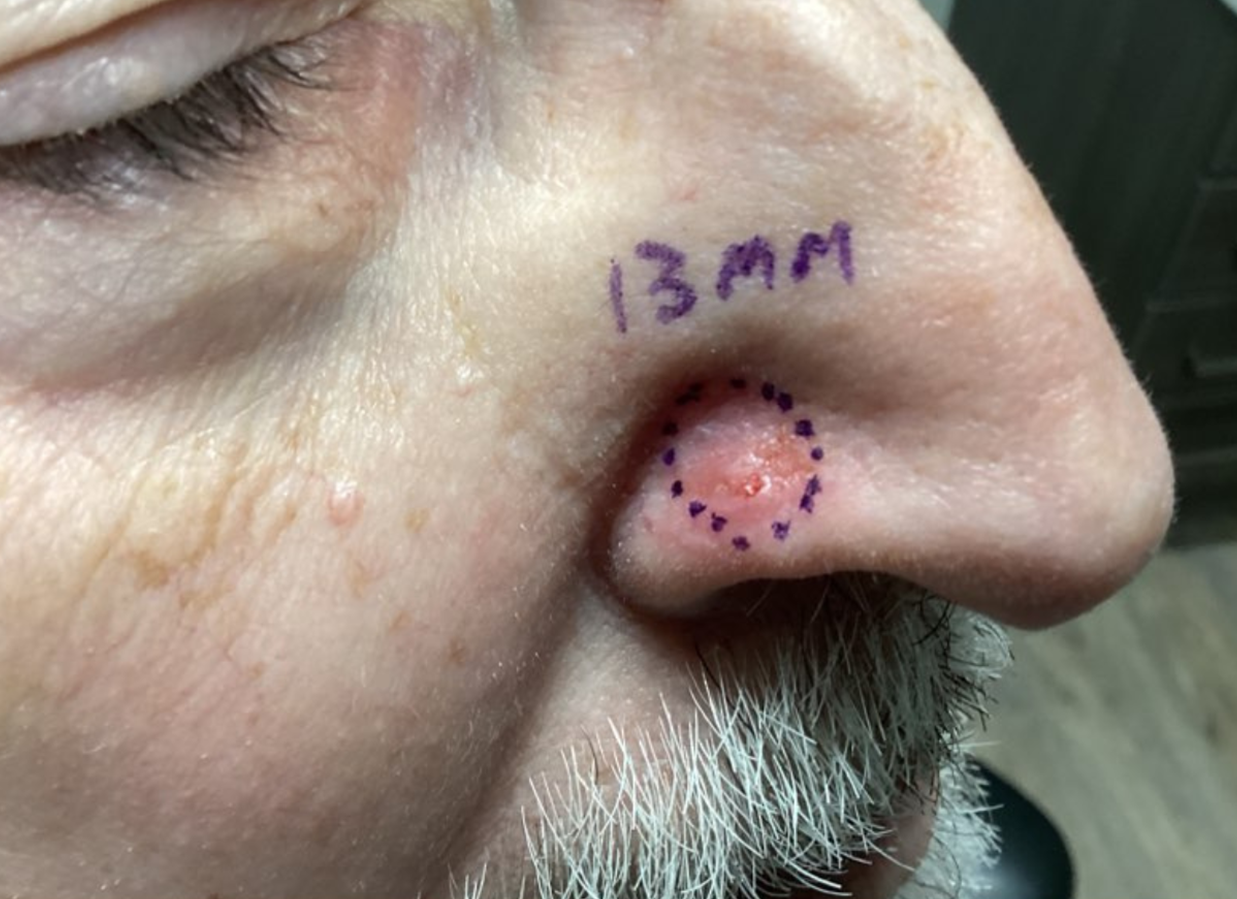
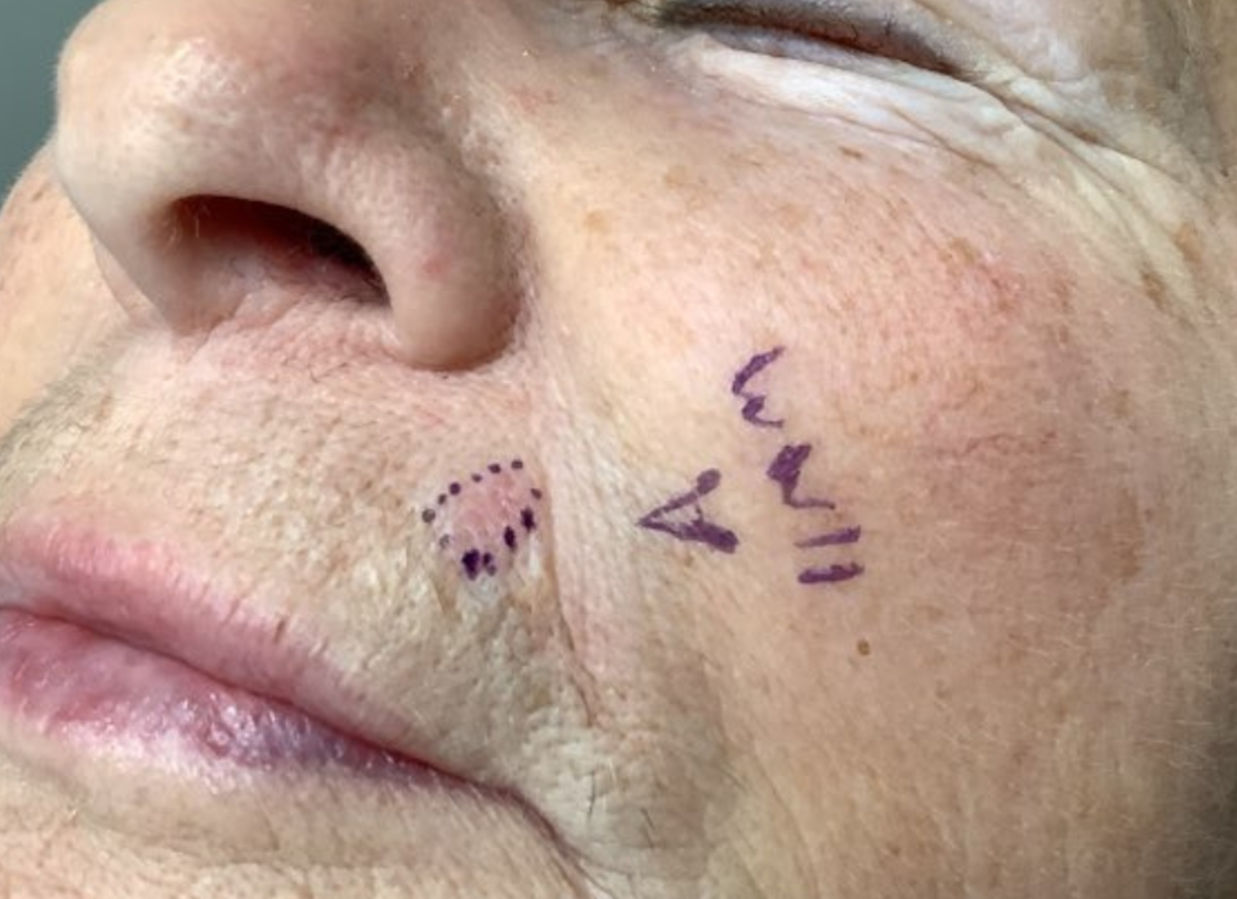
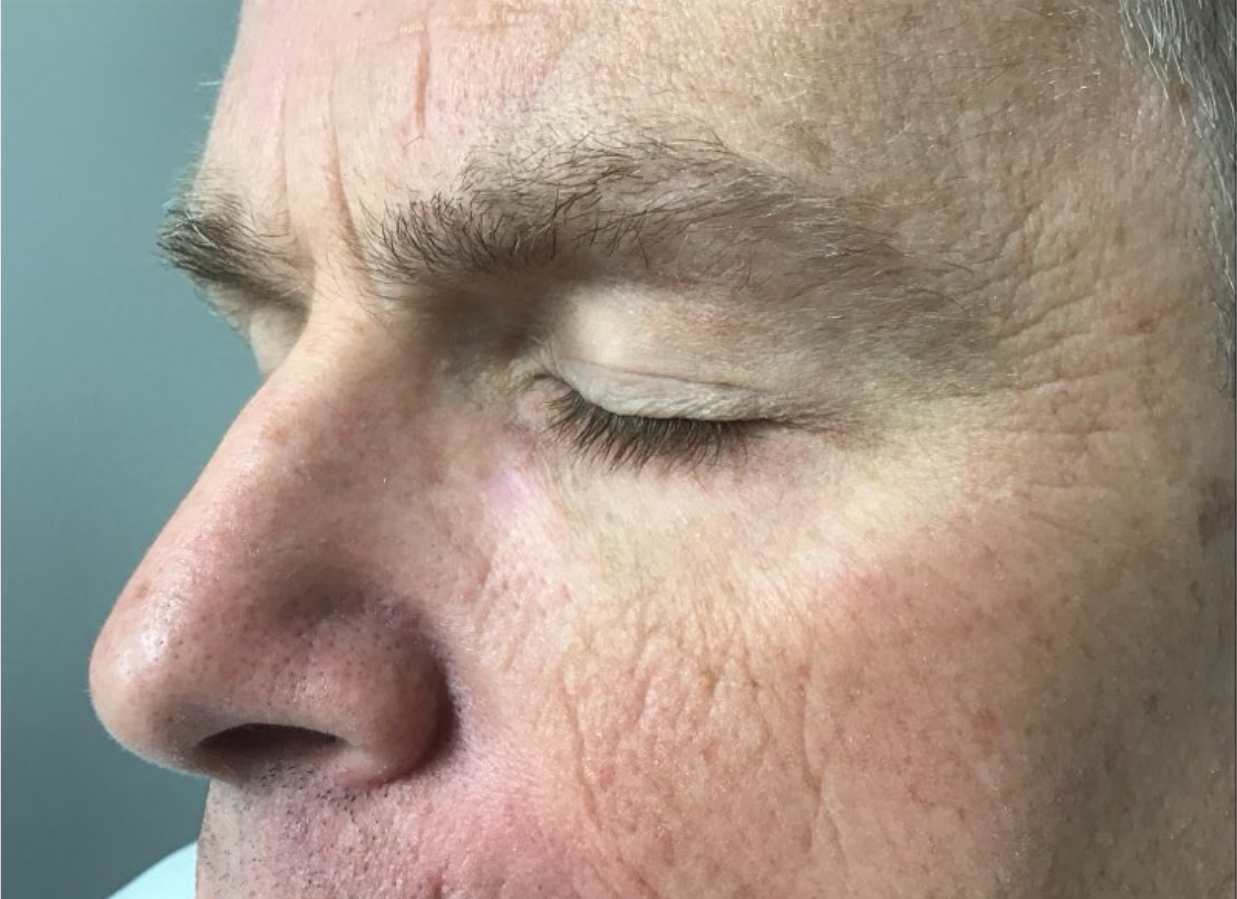
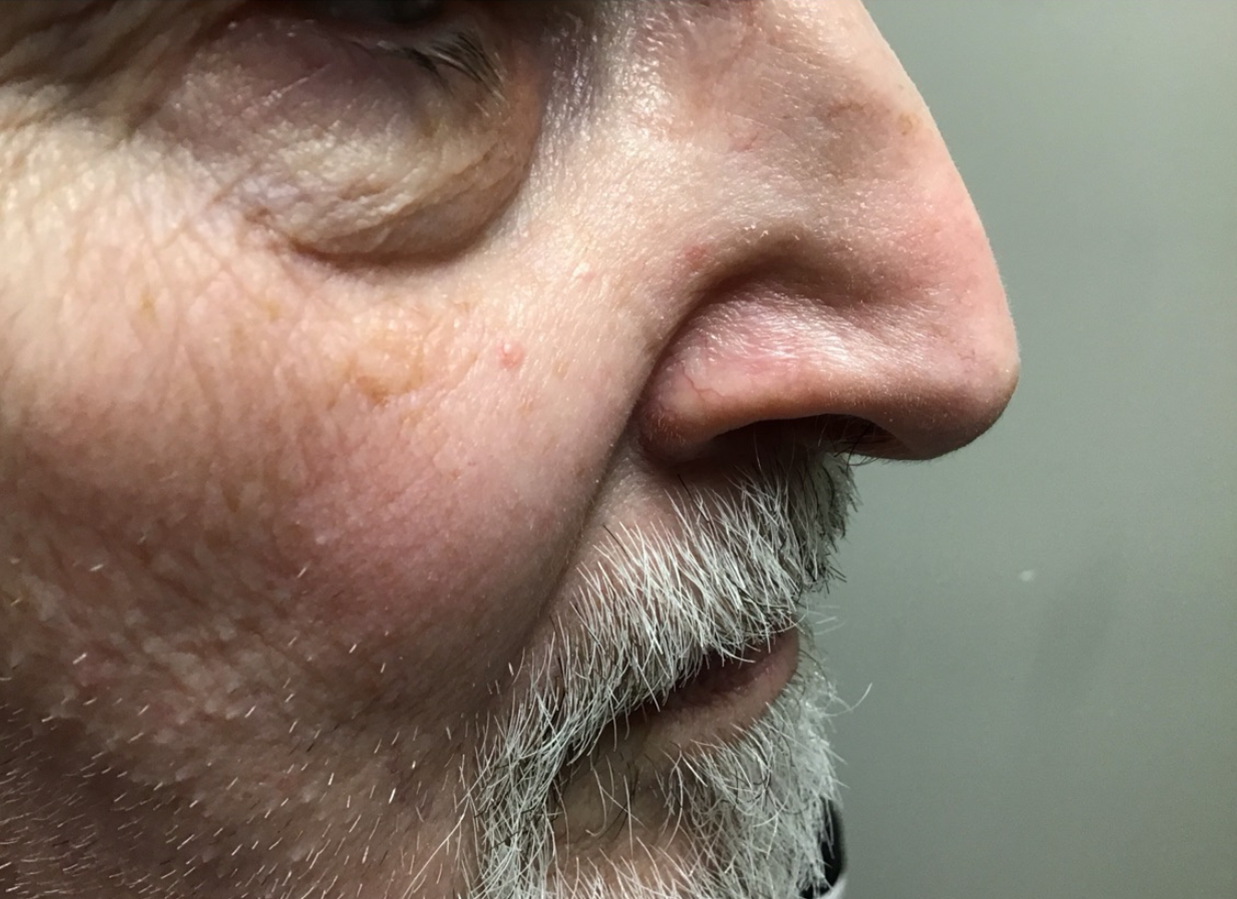
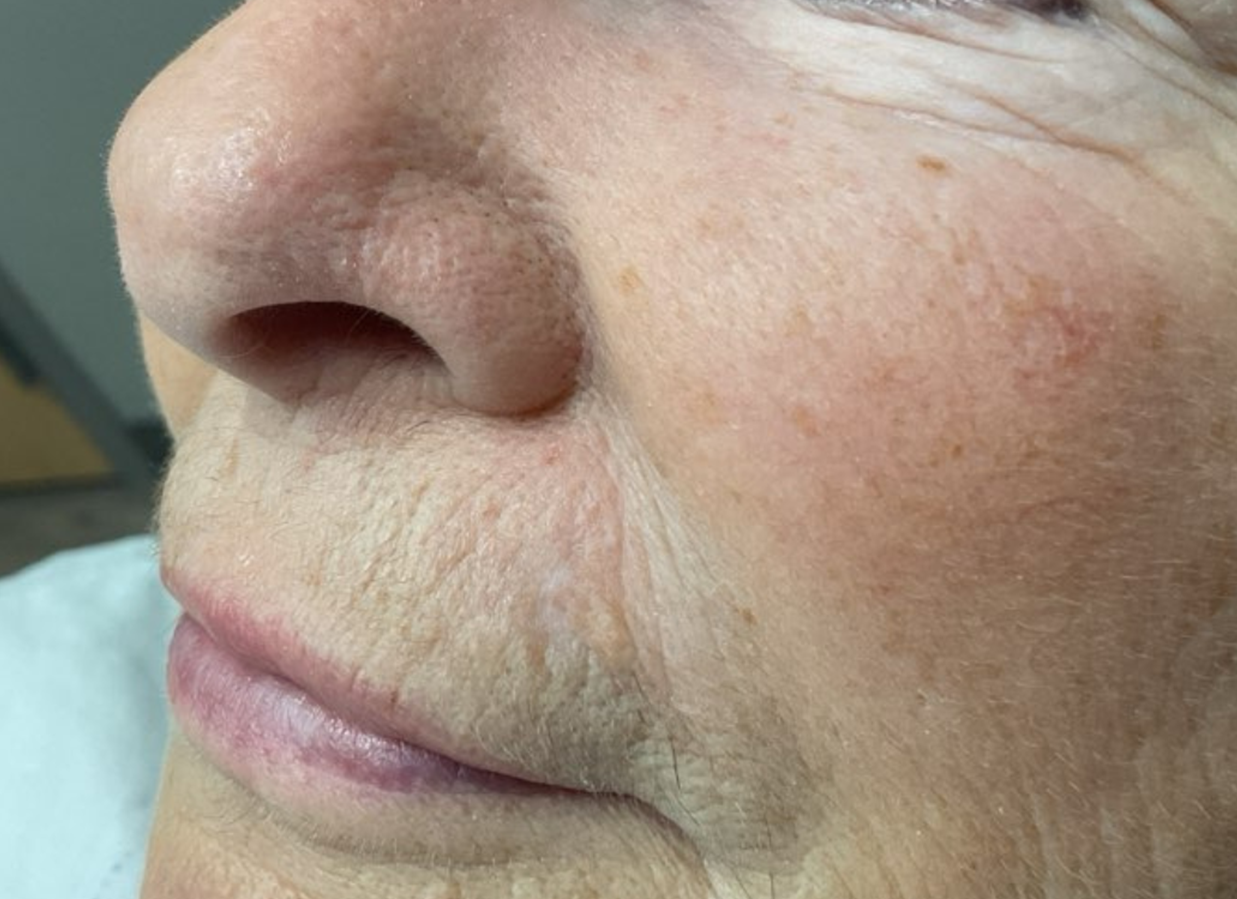
What to Expect After IG-SRT
Following IG-SRT, there are no downtime or lifestyle restrictions, so patients can return to their regular activities, including work, as soon as they wish. It requires a short appointment 3-4 times per week for 5-6 weeks to complete therapy.
Schedule Your Consultation
If you are interested in learning more about Image-Guided Superficial Radiation Therapy for skin cancer and if it is right for you, contact Fargo Center for Dermatology today. Your first step will be to schedule a consultation appointment by booking online.
IG - SRT Timeline
Biopsy
A biopsy will be performed on the questionable lesion in the clinic.
Biopsy Results
Once your biopsy results are available, we will contact you. If skin cancer is present, it will typically require a follow up treatment. Some of the most common treatment options are standard excision, Mohs surgery, IG-SRT, or an electrodesiccation and curettage procedure.
Verification Of Benefits (VOB)
While you are considering your treatment options, we will perform a VOB to determine the likely cost of the procedures based on your health insurance.
Decision
When the VOB is completed, we will contact you with the estimated cost of the procedure, as well as arrange for any payment plans. If you decide to undergo IG-SRT, we will schedule your simulation.
Simulation (Sim)
During a Simulation (Sim) appointment, the exact area to be treated will be outlined or mapped. You will be asked to sign consent forms and go over all expectations. Setup photos, ultrasound images, and treatment parameters will be discussed with your provider to determine your plan.
Treatments
At each treatment appointment, we will assess for poor skin reactions, determine your progress with ultrasound, and provide treatment. Every 5 treatments, your provider will review your case to ensure that treatment is going well.
Follow Up
Following your last treatment, you will follow up in six weeks for re-evaluation. We will repeat an ultrasound to ensure that all skin cancer is eliminated. In some cases, a booster may be needed.
Potential Boosts
Potential Boosts are added treatment doses that are administered over a few appointments.







